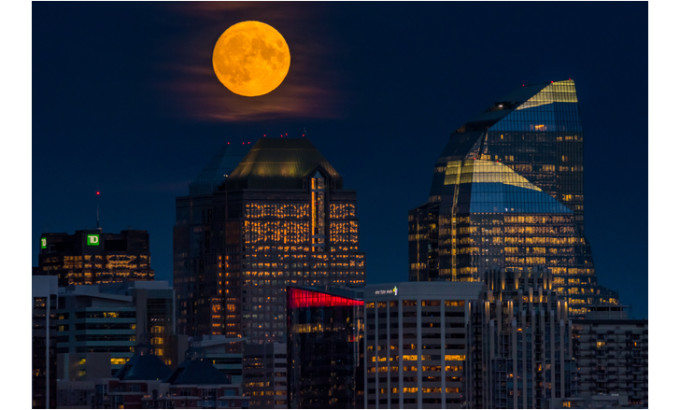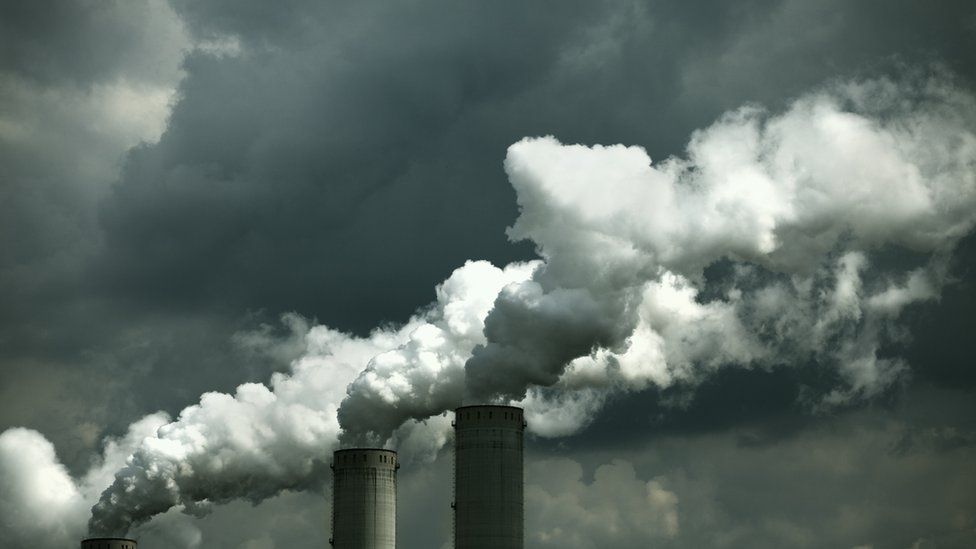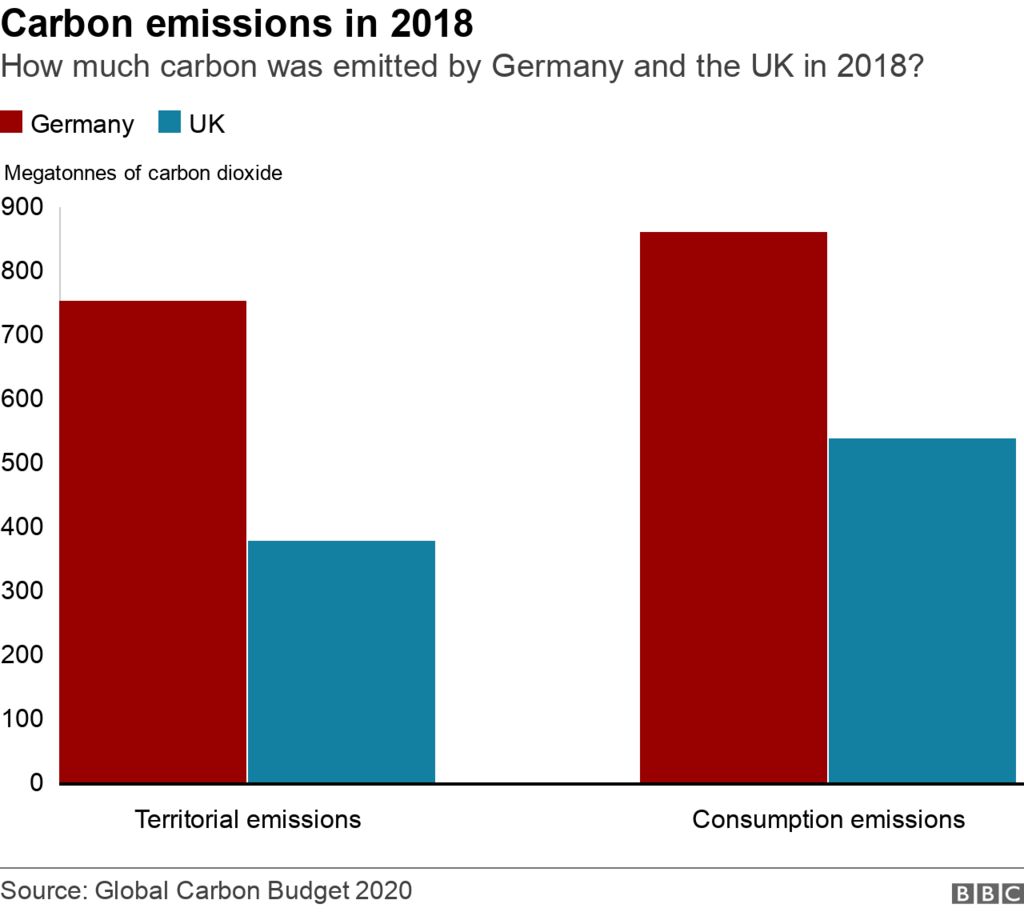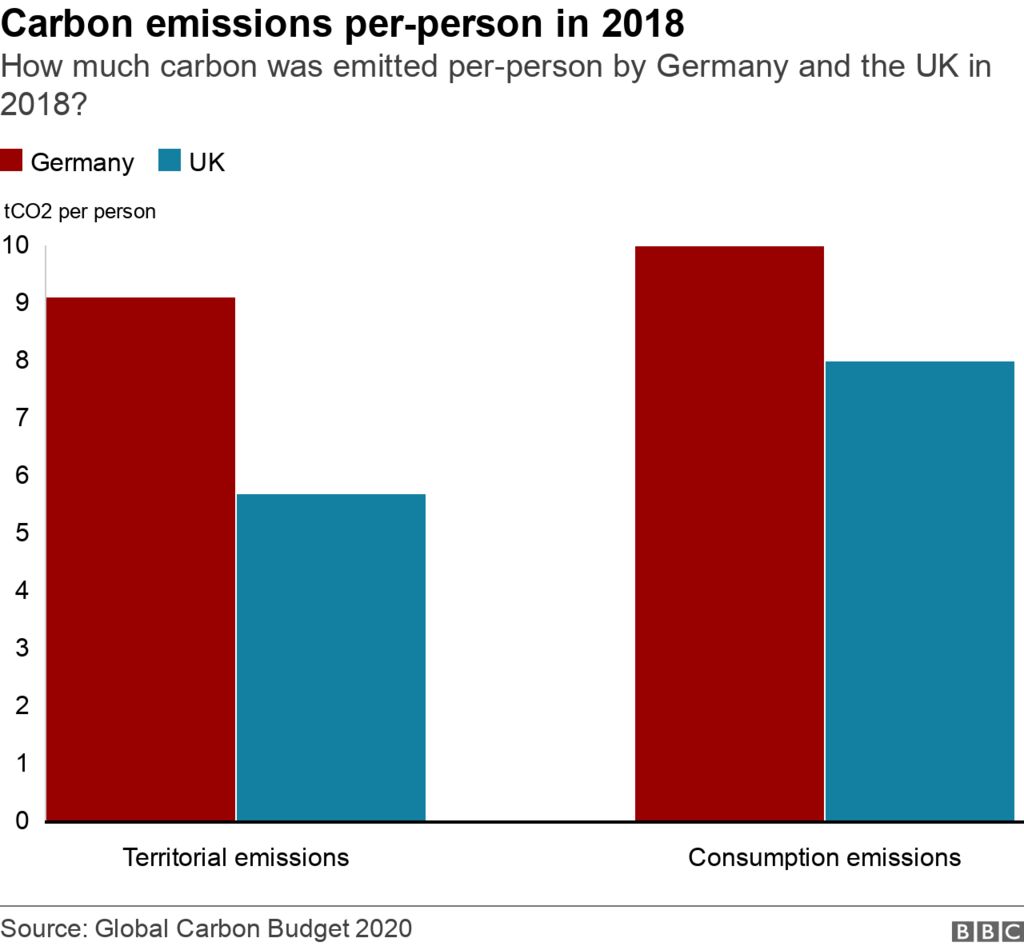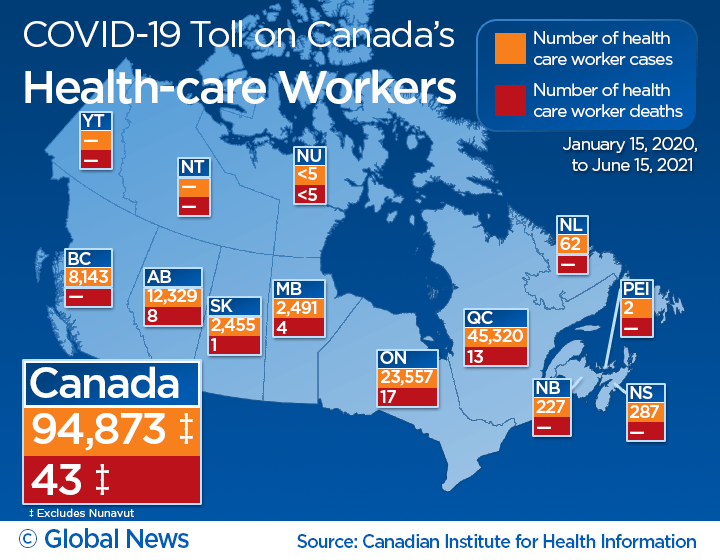Look up! The rarest Full Moon of 2021 shines in the sky this week
Thursday, August 19th 2021 -
Eyes to the sky Sunday night! We won't see another "Blue Corn Moon" until 2024!
Thursday, August 19th 2021 -
Eyes to the sky Sunday night! We won't see another "Blue Corn Moon" until 2024!
The upcoming Full Moon this weekend will be a special one to see. It is the first summer Blue Moon we've seen in five years, and there won't be another until 2024.
Take a few moments on Sunday night to pause and look up into the night sky. Venus will be there, near the western horizon, early in the night. Jupiter and Saturn are up nearly from dusk 'til dawn these days. Plus, the bright Full Moon which rises that night will be a special Blue Moon — the third Full Moon in a season with four Full Moons.
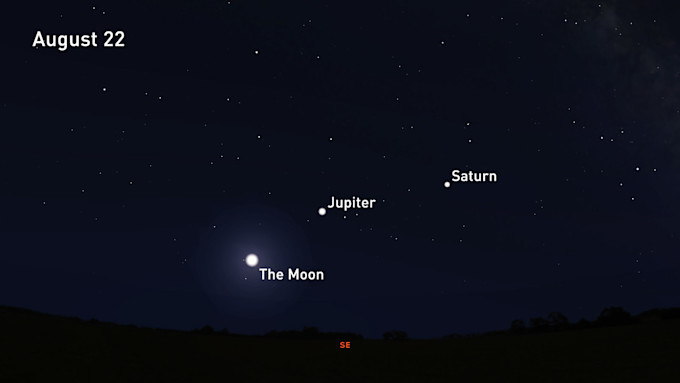
The Blue Moon hangs in the sky near Jupiter and Saturn on the night of August 22. Credit: Stellarium/Scott Sutherland
Now, there are two types of 'Blue Moon' that we hear about. The kind that typically sticks in peoples' minds (probably because it's harder to miss) is when there are two Full Moons in a single calendar month. We saw this last in the Fall of 2020 when we had the Halloween 'Micro' Blue Moon. This particular definition is based on a misinterpretation, though.
Back in 1946, the March issue of Sky and Telescope featured an article by James Hugh Pruett, titled "Once in a Blue Moon." In that article, Pruett wrote about the instance where there are 13 Full Moons in a calendar year, with the timing just right for two of them to occur within the same calendar month. He mistakenly thought that was the Blue Moon. Since they occur slightly more often than seasonal Blue Moons, this has become a somewhat more popular definition.
However, the traditional definition of a Blue Moon is "the third Full Moon in a season with four Full Moons."
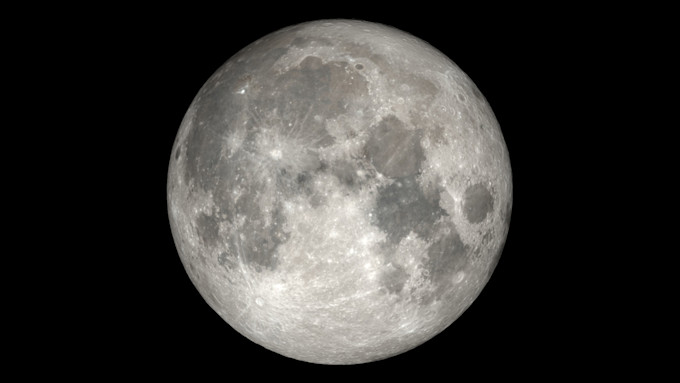
This visualization of the Moon, produced from images taken by NASA's Lunar Reconnaissance Orbiter, shows the August 22 Blue Moon. Credit: NASA's Scientific Visualization Studio
Usually, any particular season of the year will have three Full Moons. However, every three years or so, simply based on when the Full Moons appear, we'll have a season with FOUR Full Moons.
This happens when the season's first Full Moon occurs with a few days of when the season begins. Then, because the time between Full Moons is only 29.5 days, the following three will occur earlier and earlier in their respective month. The fourth one will, therefore, occur just before the end of the season.
For Summer 2021, the season starts on June 20 and ends on September 22. The Full Moons are on June 24, July 24, August 22 and September 20. So, four Full Moons, and the third one — on August 22 — is a Blue Moon.
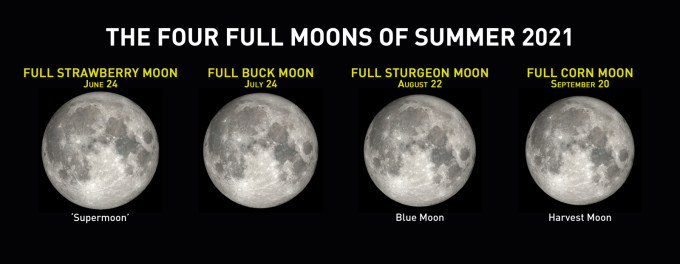
The four Full Moons of 2021. Credit: NASA's Scientific Visualization Studio/Scott Sutherland
The last time we saw a seasonal Blue Moon was on May 18, 2019. However, the last summer Blue Moon occurred over 5 years ago, on August 18, 2016.
The next Blue Moons will be on August 30-31, 2023 (the second Full Moon of that month) and on August 19, 2024 (the third Full Moon of that summer).
IS A BLUE MOON ACTUALLY BLUE?
The Moon doesn't actually appear blue on the night of a Blue Moon. It is just a saying that means "seldom" or "rare" since we don't often see the Moon look blue.
Most often, when we see the Moon change colour, it's either orange or red. This can be due to a lunar eclipse when a Full Moon passes through Earth's umbra - the darkest part of the planet's shadow. The umbra is tinged red because when sunlight passes through the atmosphere, the air molecules and the various dust, particles, and water droplets, scatter the shorter wavelengths of the light first. So, only the reds emerge out into space on the other side.
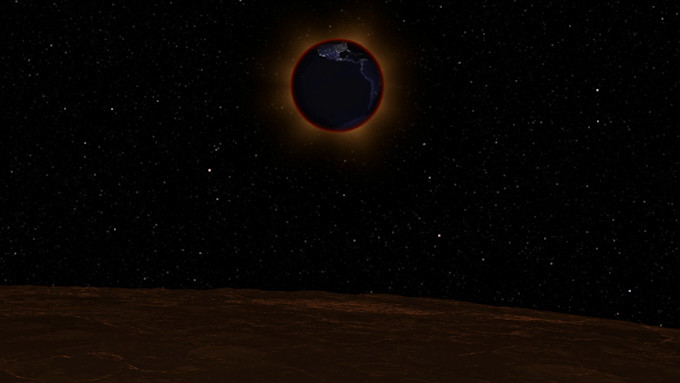
Watching a lunar eclipse from the surface of the Moon, the Earth would appear ringed in red as sunlight filters through the atmosphere. Credit: NASA's Scientific Visualization Studio
We can also see this kind of colour change when smoke and ash particles are in the air. In this case, the shorter wavelengths of the moonlight are quickly scattered, letting only the longer orange and red wavelengths pass unchanged.
Every once in a while, though, we can see the Moon actually look blue. It doesn't necessarily have to be full for this to happen.
According to NASA, "The key to a blue Moon is having in the air lots of particles slightly wider than the wavelength of red light (0.7 micron) — and no other sizes present. This is rare, but volcanoes sometimes spit out such clouds, as do forest fires."
As it happens, if there are a lot of ultrafine ash particles in the air, the red wavelengths of light will be scattered first. Thus, since only the shorter wavelengths pass through unimpeded, it gives the Moon a blue tinge. There were reports of the Moon appearing blue for years following the 1883 Krakatoa eruption. They were also seen after Mount St. Helens erupted in 1980, following the 1983 El Chichon eruption, and after the Mount Pinatubo eruption in 1991.
BLUE 'CORN' MOON?
According to the Farmers' Almanac (whichever one you favour), the August Full Moon is typically known as the Full Sturgeon Moon.
"The sturgeon of the Great Lakes and Lake Champlain were said to be most readily caught during this Full Moon," says The Old Farmer's Almanac.
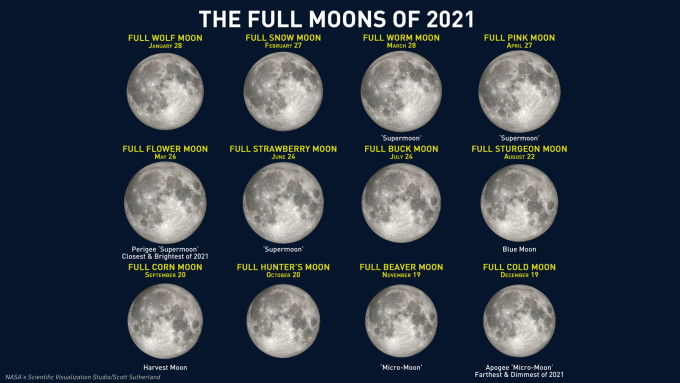
This graphic collects all the relevant data about each Full Moon of 2021, including their popular names, whether they are a 'super' or 'micro' Moon, a perigee or apogee Full Moon, and whether they are remarkable in some other way (Blue Moon or Harvest Moon). Credit: NASA's Scientific Visualization Studio/Scott Sutherland
The Farmer's Almanac, attributes Sturgeon Moon to the Algonquin peoples of the Great Lakes and what is now the U.S. Northeast. However, to the Algonquin and other First Nations peoples, 'Corn Moon' may have been the more popular name.
'Corn Moon' is the popular name given to the September Full Moon. If we go with Algonquin Moon lore in this case, though, this could be the "Blue Corn Moon" referred to in the popular Disney song, Colors of the Wind. Apparently, when he wrote the song, lyricist Stephen Schwartz simply liked the way the phrase sounded. As it turns out, he may have been closer to reality than he realized.
THE MADDENING MOON ILLUSION
Seeing the Full Moon at any time of night is a spectacular sight. However, go out just after moonrise or just before moonset for what is usually an exceptional treat. It's not something the Moon itself is doing, though. Instead, it's due to a bit of trick of our mind known as The Moon Illusion.
There are times when the Moon actually does look bigger to us, such as during a supermoon, when the Moon is physically thousands of kilometres closer to Earth than usual. There are other times, however, when we just think it looks larger.
As our eyes take in the world around us, our brain knows from experience that objects close to us tend to appear larger and in focus. In contrast, distant objects tend to be tiny and blurry. From this, it also knows that for a distant object to appear in focus, it must be very large.
This close-up of the Harvest Moon was snapped in Calgary, AB, on September 13, 2019. Credit: Siv Heang
So, when we see a bright Full Moon hanging crisp and clear in the sky above the horizon, it is contrasted by all of the objects on the ground, which appear smaller and blurrier the closer they are to the horizon. This combination confuses the brain. So, to compensate, the brain interprets the Full Moon as being much bigger than it truly is. To be clear, the Moon is certainly much larger than any of the objects on the horizon (it's 3,474 km across), but this 'illusion' gives us the impression that the Moon looks enormous!
Look up into the sky closer to the middle of the night, and the Moon will be high above our heads. Usually, it will be the only thing we see, other than the stars and maybe a few planets. At that time, the brain is focused only on the Moon, and without the other objects in the field of view to complicate matters, it is free to just 'see' its actual size.

This zoomed-in image of the Full Snow Moon was captured from Salisbury, NB, on February 9, 2020, and uploaded into the Weather Network's UGC gallery. Credit: Darlene MacLeod/Smith
We have a few tricks of our own that can cancel out the Moon illusion, though.
For the first one, we don't need technology. Just go outside after sunset and find the Moon near the horizon. Stretch your arm out towards it, and cover the Moon over with your thumb or even your pinky finger. Note how big the Moon looks compared to the digit in question, and keep that in mind. Maybe even take a picture of it, if you want. Later in the night, check out the Moon again when it is high in the sky. It may appear smaller than when you saw it earlier, but repeat the step to cover it over with your thumb or finger. Compare it with what you saw before, and you'll find that the Moon is actually precisely the same size at both times.
There is a way technology can help us, though. When the Moon is low on the horizon, take out your cellphone, turn your camera on, and point it at the Moon. Note: it is possible for the Moon illusion to still work on us when looking at a picture or video. This is because the brain will make the same judgments of distance, blurriness, and size it did when looking at a 'live' scene. Still, directly comparing what we see in the sky at that time to what is shown on our small cellphone screen can help put things into better perspective. Plus, you can also take a few pictures to upload into the Weather Network UGC Gallery while you're at it!
